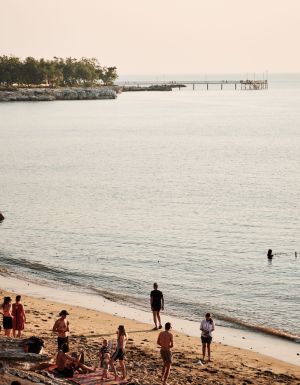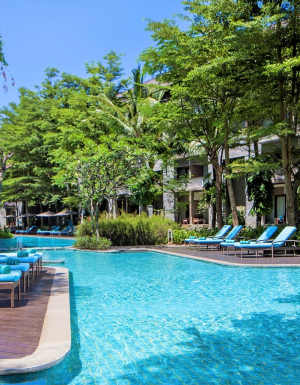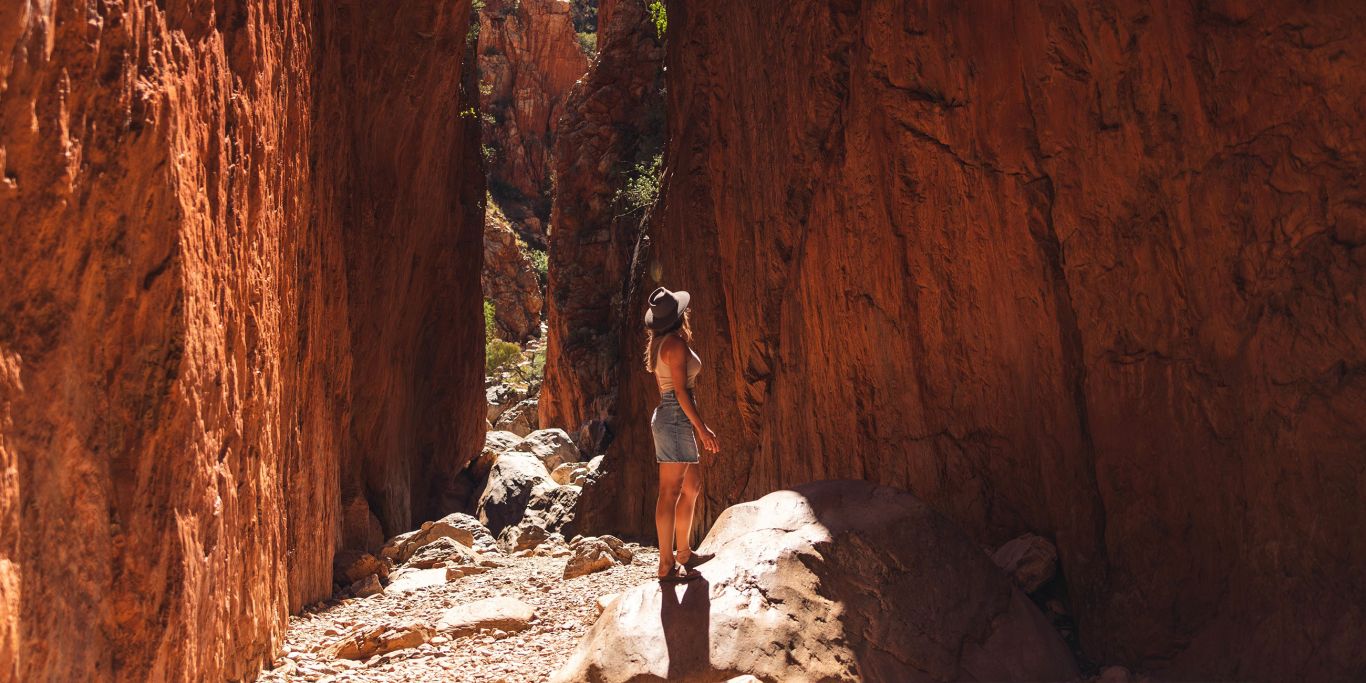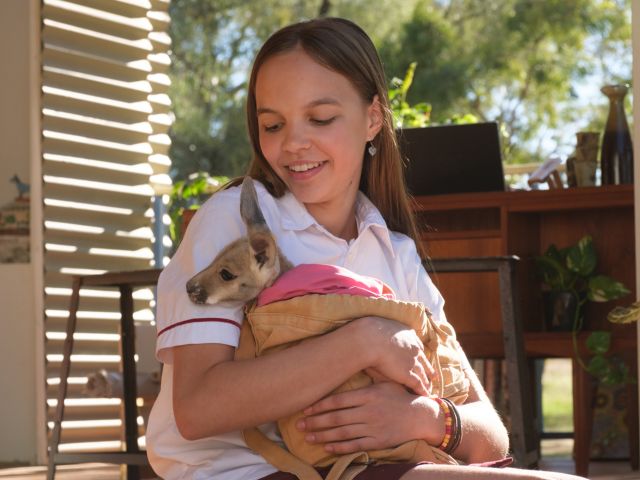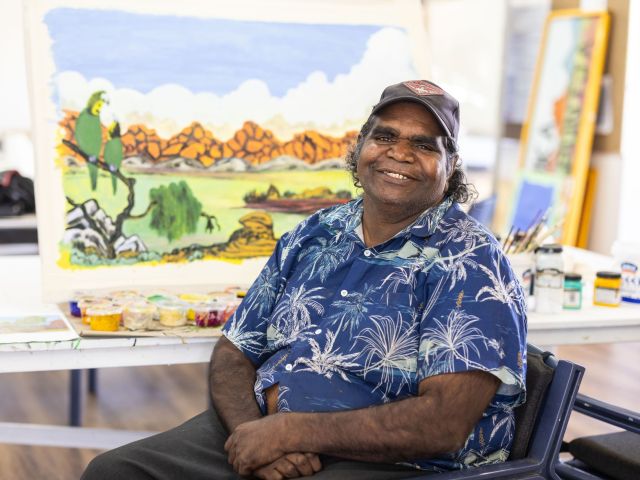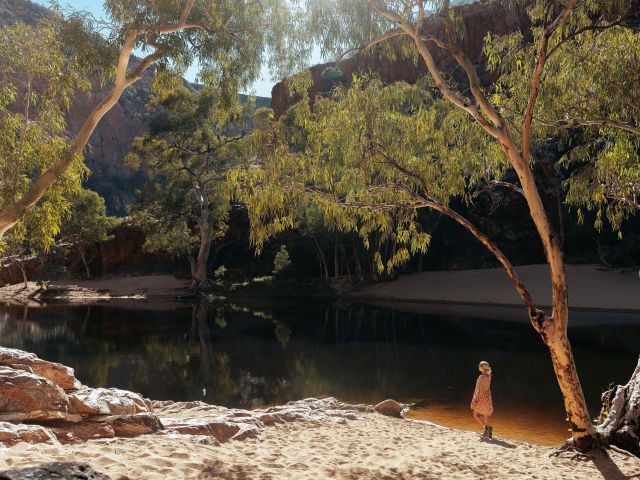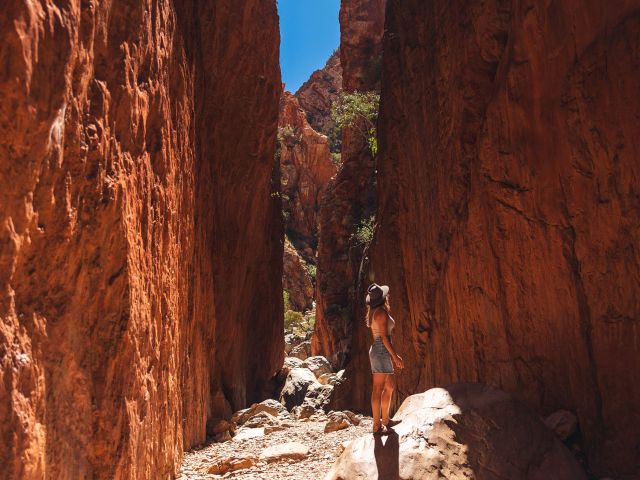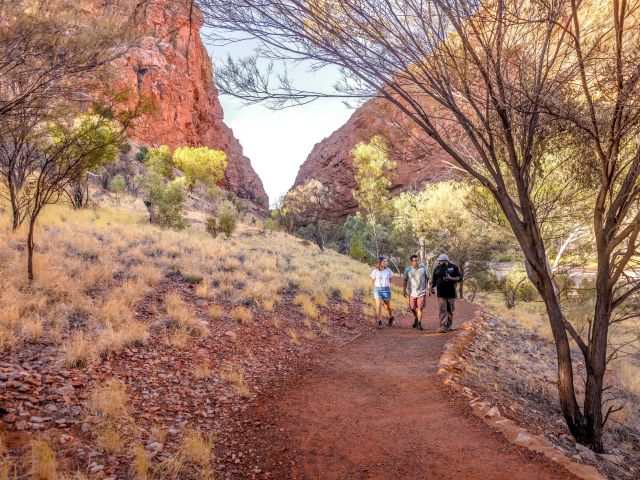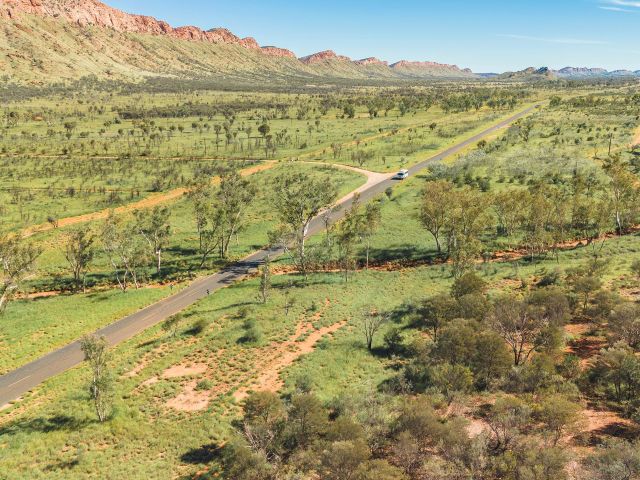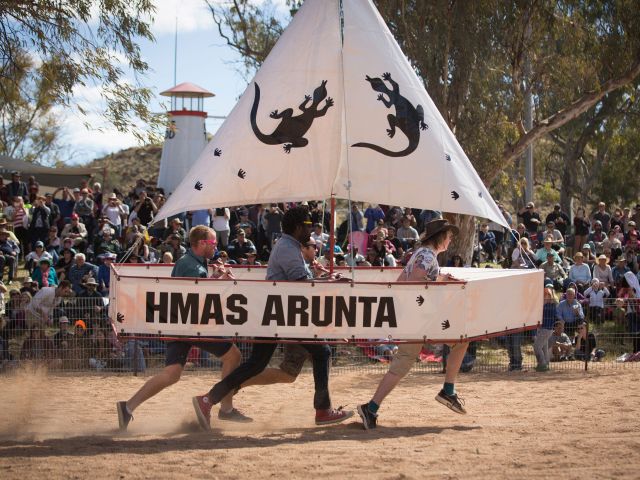A holiday to Darwin isn’t complete without venturing into the natural and cultural wonders that lie beyond its city lights. Here, four of the best day trips from Darwin.
Darwin is a colourful city thanks to its vibrant markets, outdoor movies and other urban delights. But the city’s surrounds are equally (if not more) enchanting. Hop in the car – or catch a ferry, bus or charter flight – to one of these gems that sparkle just a short distance away from the Northern Territory capital. Here are the four best day trips from Darwin.
Litchfield National Park
If you fancy waterfalls, emerald-green swimming holes and a tropical and tranquil setting, Litchfield National Park is only a 1.5-hour drive from Darwin. Travel down the Stuart Highway and enter the park via the tiny township of Batchelor, stopping at the magnetic termite mounds before exploring the plunging waterfalls at Florence Falls, or floating inside a network of peaceful waterholes at Buley Rockhole. A walking path links the two popular spots, so take your time ambling along this route, pausing for regular dips in the adjacent waters.

Other stunning sites within Litchfield include Tolmer Falls and Wangi Falls, the best-known attraction in the national park. Within the park, you’ll find a kiosk and barbecue facilities at Wangi Falls, walking trails and a picnic spot that’s ideal for a lazy tropical lunch. Access to the park is free and the best time to visit is during the early morning or late afternoon.

Total travel time, Darwin return: about four hours
What to pack: Sunscreen, lunch, water, beach towel and goggles if you want to explore underwater.
Mary River Region
If spotting wildlife in its natural habitat is high on the agenda, and you’re partial to a rainforest walk, travel 70 kilometres to the Mary River wetlands east of Darwin along the Arnhem Highway (leading to Kakadu National Park). Make Fogg Dam Conservation Area your first stop, where you can choose between the wetlands or a walk. Up to 200 species of birdlife gather among the lilies and reeds in the wetlands, including rainbow pitta birds and crimson finches. You might spy the odd croc, too.

Walking trails will take you through the rainforest, past ancient fig and banyan trees, to a number of lookouts overlooking the wetlands. Take your adrenalin levels up a notch a little further along the highway with a jumping crocodile cruise. Over one (spine-tingling) hour, you’ll coast along the Adelaide River, where crocs lurk just beneath the water’s surface and jump up to snap at buffalo meat hanging from rods just off the boat’s deck.

Total travel distance, Darwin return: two hours
What to pack: a broad-rimmed hat, sunscreen, water, lunch and binoculars.
Crab Claw Island
Just over an hour’s drive from Darwin, Crab Claw Island Resort is a picturesque coastal retreat perched on the water’s edge – providing the perfect balance of family-friendly fun, fishing and relaxation. There are two pools and boats for hire, or simply relax on the deck. If you’re a keen angler, don’t forget to register to catch the Million Dollar Fish .

Total travel distance, Darwin return: two hours driving
What to pack: a broad-rimmed hat, sunscreen, bathers, beach towel and water.
Berry Springs
If a short-ish day trip from Darwin sounds ideal, you can’t go past a visit to Berry Springs Nature Park – it’s a real-deal tropical paradise. Travel south from the city and turn off at Cox Peninsula Road to get to the park, located just 50 minutes’ drive from Darwin. Pull in at Territory Wildlife Park on the way to explore its vast 404 hectares, home to almost every variety of native bird, reptile and macropod.

A shuttle bus takes visitors to the Nocturnal House, which hums with ghost bats, sugar gliders, quolls and other night-time critters, as well as the walk-in aviary, aquarium, stingray lagoon and dingo enclosure. Refresh over a mango chutney-laced lunch and a tropical fruit ice cream at Crazy Acres Mango Farm , then dive into Berry Springs: three sparkling, azure-hued waterholes fringed by pandanas.
Total travel distance, Darwin return: 1.5 hours
What to pack: mask and snorkel, water, towel and sunscreen.
Want more travel inspiration for Darwin? Check out our guide to Darwin here.

